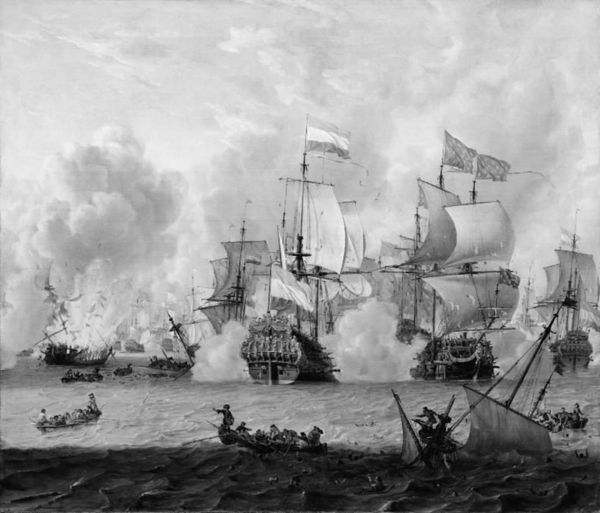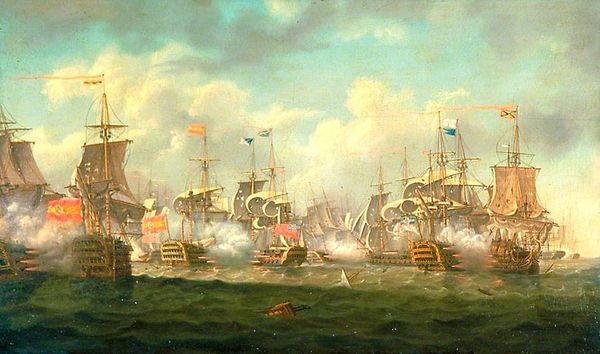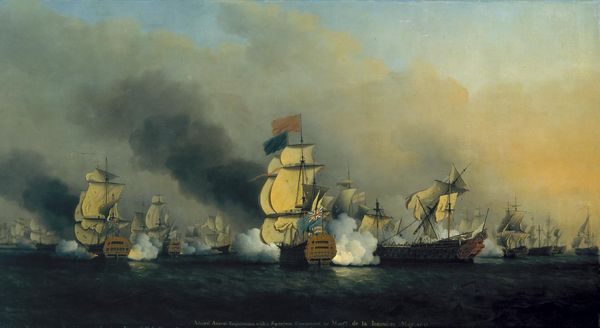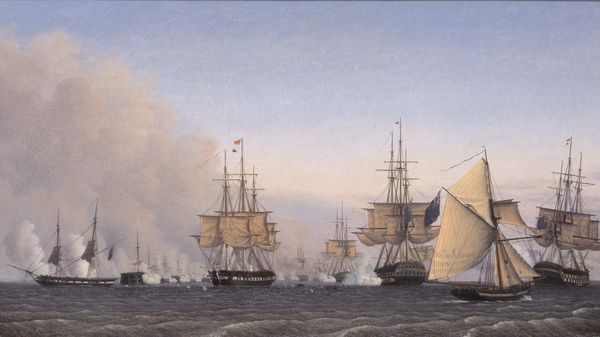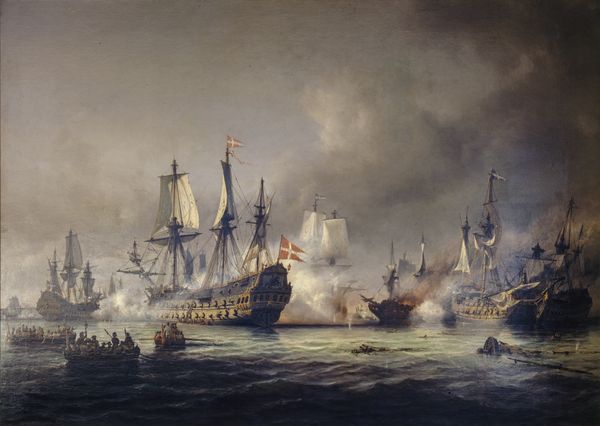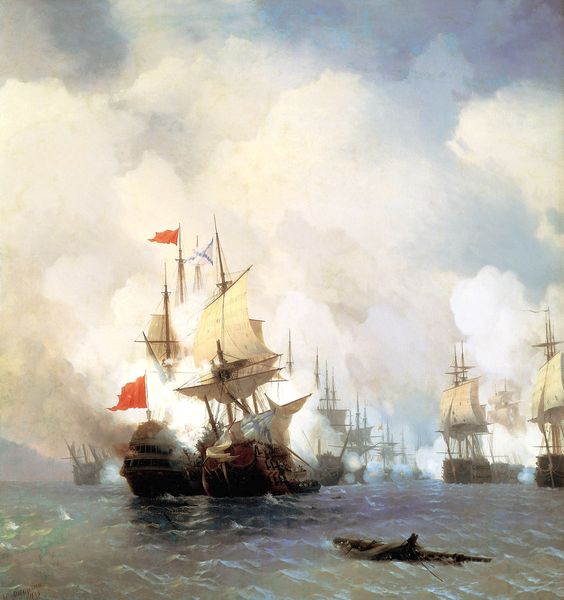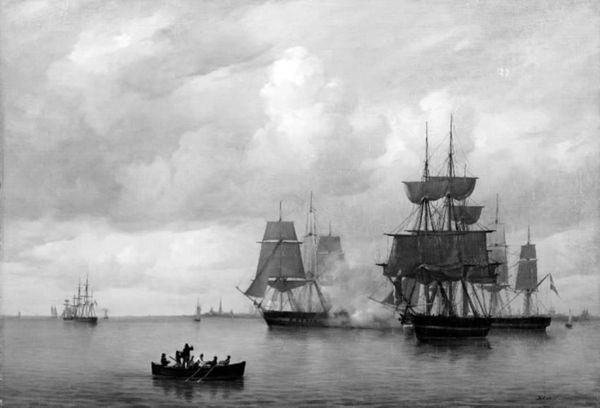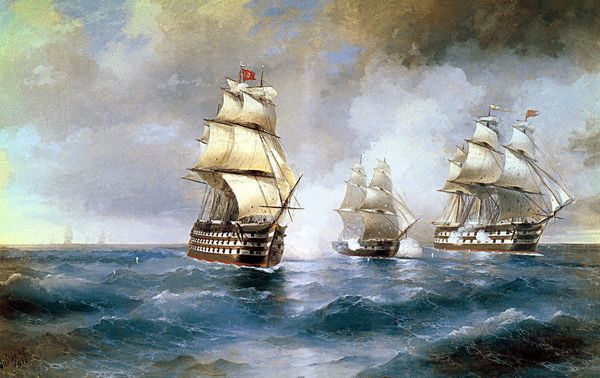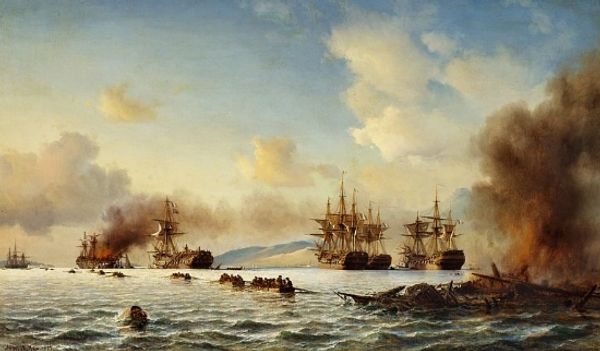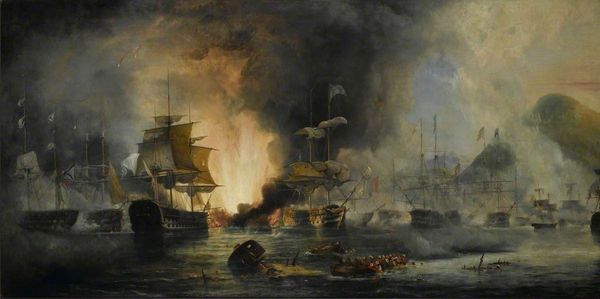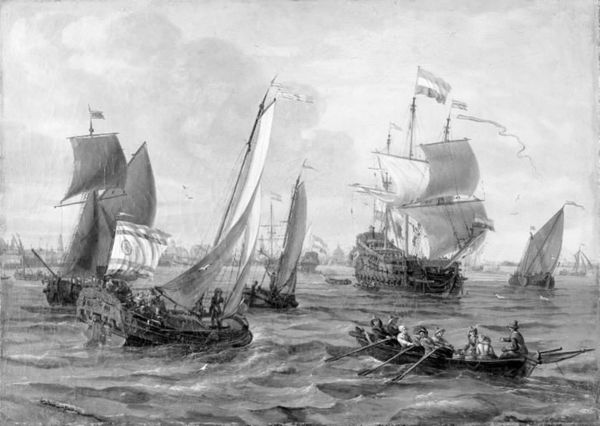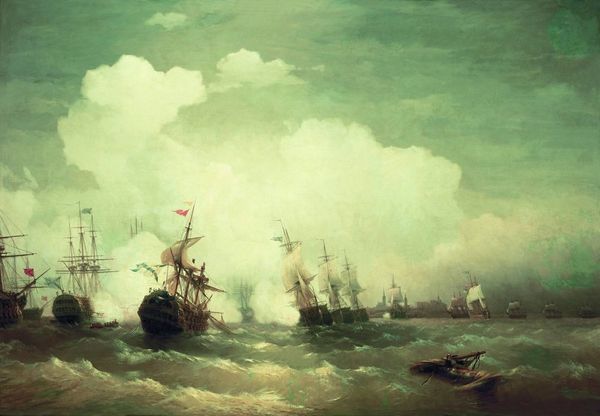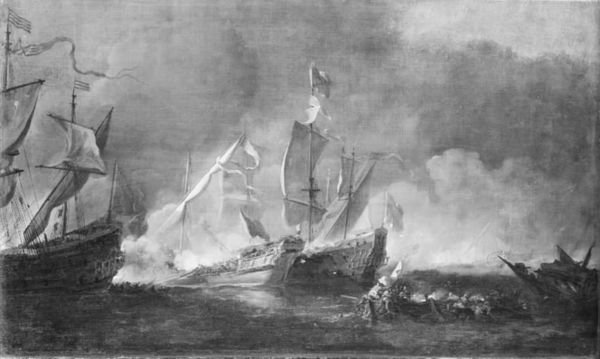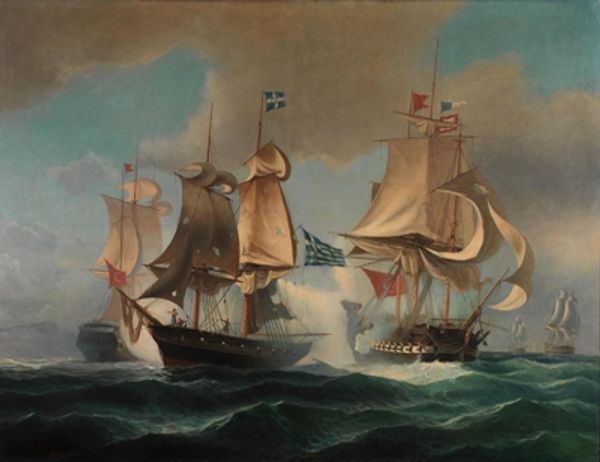
#
boat
#
abandoned
#
fantasy art
#
ship
#
futuristic
#
vehicle
#
sculpture
#
war
#
possibly oil pastel
#
derelict
#
ocean
#
haunting style
#
water
#
line
#
solarpunk
#
mixed media
#
ruin
#
sea
Dimensions: 185 x 321.5 cm
Copyright: Public domain
Curator: I'm immediately struck by the atmospheric density here, that pervasive fog blurring every sharp edge, really diminishing any clarity of form. Editor: That’s right. What we’re looking at is “Battle of Osel Island,” a canvas completed in 1866 by Alexey Bogolyubov. Curator: Well, even without that information, the warship motif itself is laden with meaning. The warship often symbolizes power, defense, even the spirit of a nation. Here, that symbolic weight is palpable amidst all this turbulent, chaotic, painterly fog. Editor: Exactly. Notice how he utilizes white to showcase battle between ships on dark seas under heavy sky? White also historically signifies purity or surrender - are we to believe one side may be trying to make that known here? Curator: Purity might be a reach, though I grant that it's complicated by that near-monochromatic palette. The composition lacks traditional depth, almost flattening the scene and drawing attention to the surface of the work itself. It presents more of a visual record than a celebration of maritime prowess, doesn’t it? The eye travels almost aimlessly, trying to distinguish forms without success. Editor: And culturally, maritime battles tap into the deep-seated anxieties around territoriality and conflict, resonating even today with contemporary geopolitical struggles. It asks the viewer to reflect upon our human history when conflict often resulted in who had a better ship to sail and cannons to fire from that ship. Curator: Interesting angle. Technically speaking, it’s more interesting for its blurring of edges than the specifics of the subject itself, and how form becomes subordinate to this sense of movement, and that stark contrast between ships in conflict, with its high drama being diffused, dare I say neutralized, by atmosphere. Editor: Ultimately, “Battle of Osel Island” evokes how art serves not just as a portrait of specific battles or moments in time but mirrors complex narratives of national identity, historical ambition, and symbolic potency that continue echoing across time. Curator: I concede the picture, despite all that gray obfuscation, certainly leaves its mark on how we perceive conflict.
Comments
No comments
Be the first to comment and join the conversation on the ultimate creative platform.
